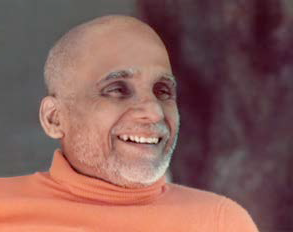The observances of yoga – saucha, santosha, tapas, svadhyaya and ishvara-pranidhana – are personal practices of a religious nature, in the true sense of the term, and they have to go hand in hand with the niyamas – ahimsa, satya, asteya, brahmacharya and aparigraha – already mentioned. Thus, yama and niyama form the rock bottom of the other stages of yoga, and in this way are the central forte, as it were, of yoga practice. These yamas and niyamas are not moral or ethical sermons that are given by yoga teachers. They are scientific disciplines, unavoidable and inviolable under all circumstances.
The last of the niyamas is ishvarapranidhana, or surrender of oneself to God. Whatever the commander orders, the army follows. Each one in the army does not start commanding things independently. Seekers of Truth take Ishvara as the Supreme Commander, and once they decide to abide by his will, their lives become the pattern of righteousness. Surrender to God implies acceptance of the divine ordinance and an abolition of one’s own initiative to the extent that the seeker does not think individually but resigns himself to those circumstances mechanical bull for sale which take place around him, without interfering with their occurrence. In advanced stages, the devotee is accustomed to all circumstances, and does not desire a change in their setup. He does nothing with the notion of personality, but bears what comes. He does not wish to alter conditions, but tolerates everything. He allows things to happen, and does not wish to modify existence. To him, God is all. This is the essence of selfsurrender in yoga.
A daily prayer to God is a great tapas by itself. When we get up in the morning, we must offer a prayer from the bottom of our heart, from the depth of our soul, weeping and crying for God. It is a great meditation; it is a complete yoga by itself. More things are wrought by prayer than this world dreams of. Prayer is a tremendous power. It is an independent yoga by itself and does not require any other accessory to it. By mere prayer, we can reach God; we can attain the great goal of yoga, provided the heart prays and not merely the lips. God listens to the prayer that comes from the soul of man but not to the prayer that emanates merely from his lips in so many words. So, ishvarapranidhana or self-surrender to God, implying prayer, worship, dedication, and various other forms of worship, is regarded as one of the niyamas.
The yoga discipline requires that a student should score at least the minimum marks in the test of the yamas and niyamas. Students often commit the error of neglecting these fundamental observances in yoga and going to asana and meditation directly. Many even begin to think that they are already established in the yamas and niyamas, while they have not mastered even one among them.
The invisible power which the yamas and niyamas exert is the foundation of yoga, and no one insuflaveis should have the hardihood to think that one is fully established in them. Caution is the watchword in yoga.
Even as education at the primary school level is important since it paves the way for one’s further mental growth, the yamas and niyamas are the rock bottom of yoga. The student enters the practical field of meditation after being built up by the tonic of the yamas and niyamas, which provide the power and courage needed to face all obstacles. The yama-niyama process constitutes the instructions in yoga psychology, which should give us sufficient warning on the path and make us vigilant pilgrims on the journey spiritual. With this, we place ourselves on the first step in practical yoga, viz., asana.















 About the Author Swami Krishnananda is a highly respected philosophical writer, especially on the subjects of metaphysics, psychology and sociology. Swamiji’s books are known the world over as excellent presentations of answers to the daily questions that arise in the day-to-day confrontations of a human being. Swami Krishnananda was the General Secretary of The Divine Life Society from 1961 until 2001.
About the Author Swami Krishnananda is a highly respected philosophical writer, especially on the subjects of metaphysics, psychology and sociology. Swamiji’s books are known the world over as excellent presentations of answers to the daily questions that arise in the day-to-day confrontations of a human being. Swami Krishnananda was the General Secretary of The Divine Life Society from 1961 until 2001.


 Other
Other